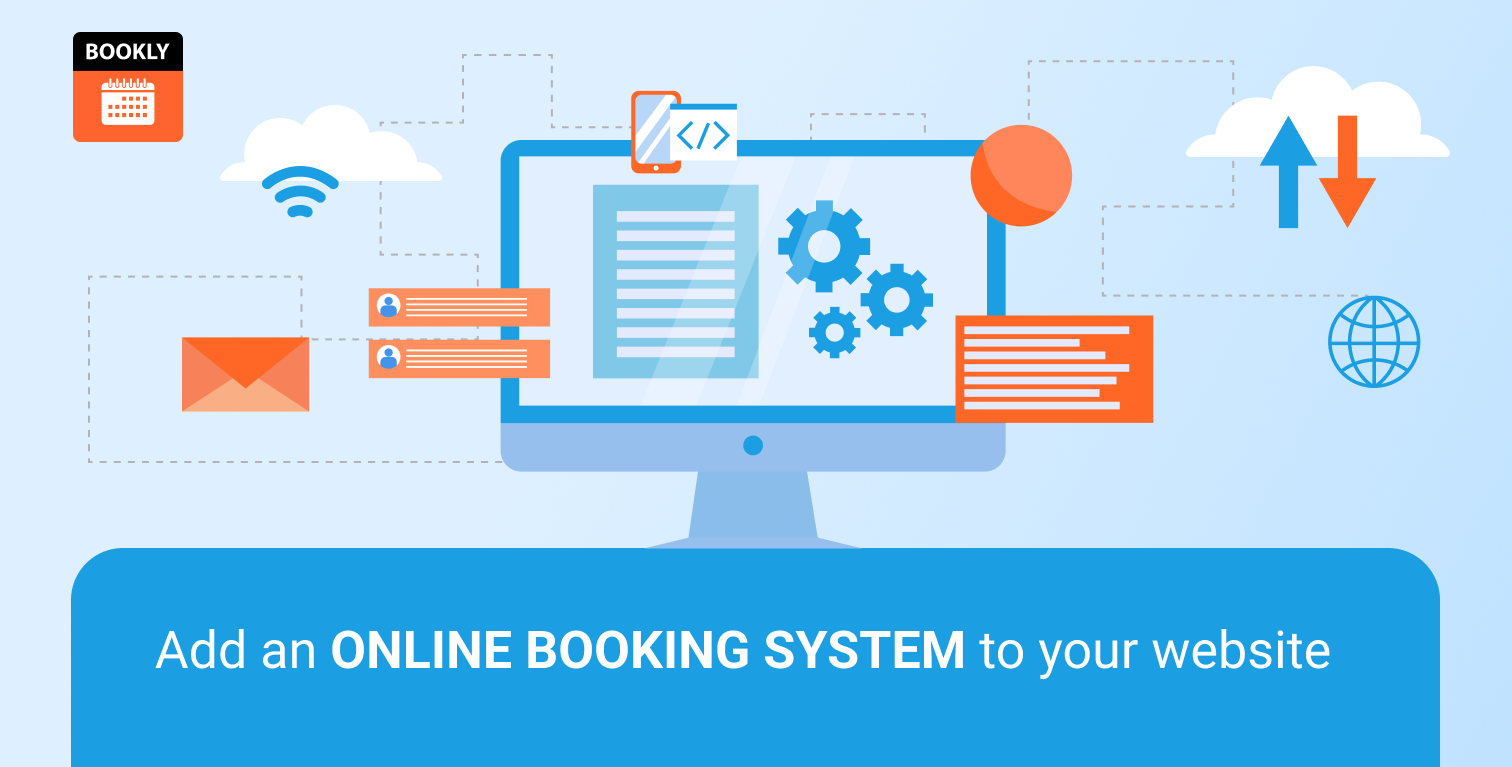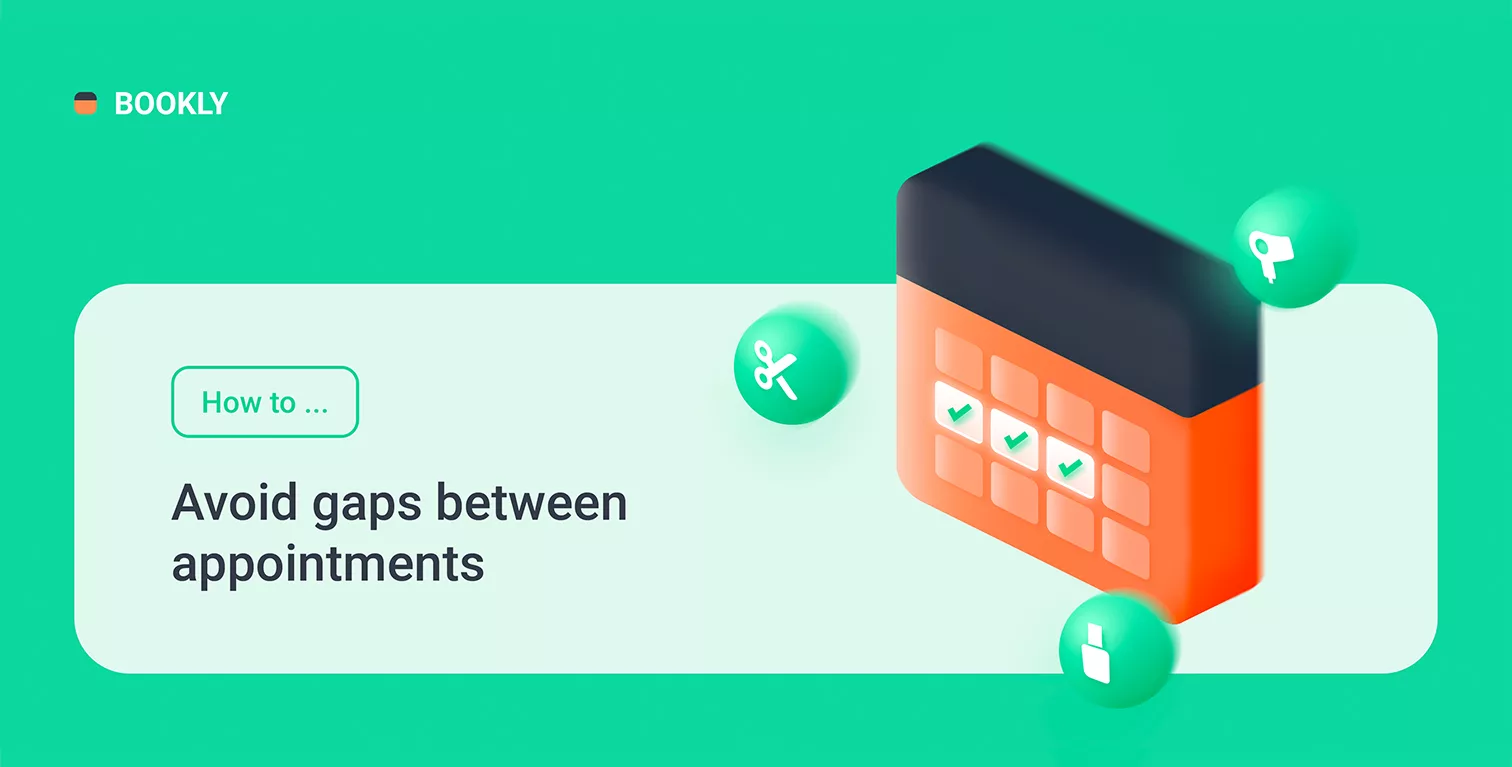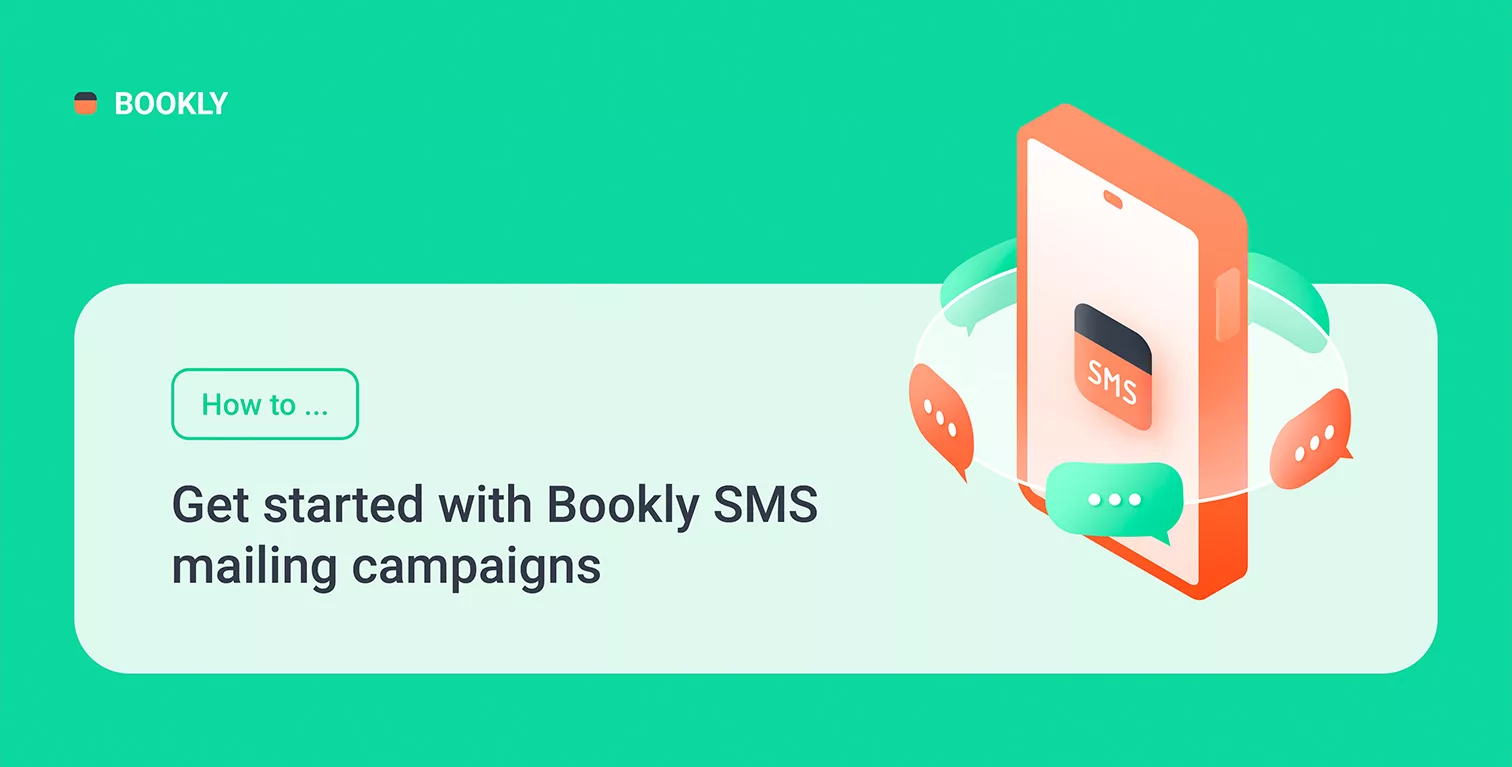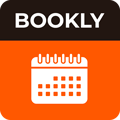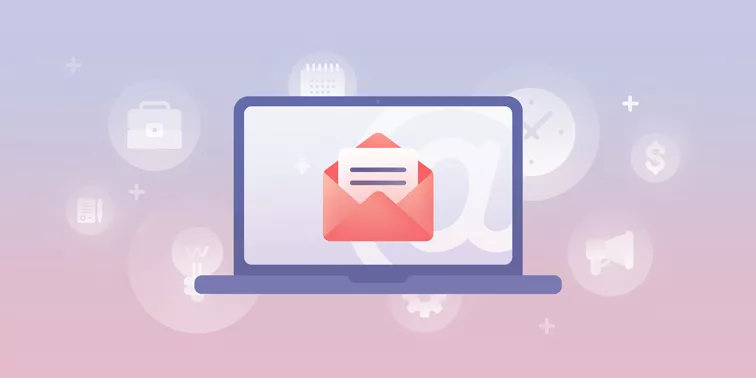
Email Marketing for Small Businesses Guide
Email marketing is a channel no small business can afford to ignore. According to one study email marketing delivers a return of $44 for every one dollar spent. In fact 59% of marketers say email produces their highest return on investment.
Email marketing works no matter whether you are targeting a business or consumer market. 81% of B2B marketers say that email is their top channel for content marketing. For B2C businesses email is equally effective. 59% of consumers surveyed said that email influenced their buying decisions.
In this guide to email marketing for small businesses we detail everything you need to get started with this powerful communication channel. You’ll discover why email is so effective and how you can make the most of your email marketing campaigns. Find out how to design high-converting email templates and what emails you need to send to produce the best results.
Email marketing basics
Email marketing involves communicating via email to a list of readers who have chosen to subscribe to your content. The marginal cost of mailing an additional subscriber is extremely low, making it one of the best marketing channels to scale. Email marketing allows you to communicate to a large, geographically dispersed audience using a single email. For instance, email marketing for local businesses can help maintain strong connections with community customers. And because you communicate with that audience on a consistent basis you can help guide new subscribers through to becoming buying customers.
Email marketing will usually involve a regular email newsletter. This could be sent on a daily, weekly or monthly basis. Email marketing may also involve delivering a set series of email communications over a period of time. By using email automation platforms you can send highly personalised and segmented marketing messages to a large group of subscribers.
Benefits of email marketing
Email marketing produces numerous benefits that set it apart from other channels. Implementing best small business email marketing practices ensures higher engagement and return on investment. Some of the key benefits of email marketing include:
High return on investment
Email offers some of the highest returns on marketing spend. The cost of sending an email is very low compared to other marketing channels such as TV, radio, online ads and direct mail. But email is not only inexpensive, it also tends to convert very well. Regular communication via email is extremely effective for nurturing leads.
Reach the widest possible audience
Approximately seven out of every ten adults use Facebook in the United States. That’s a truly impressive level of reach. But it also means as a small business owner, that about a third of your customers aren’t on Facebook. The same applies to other popular platforms like Twitter and LinkedIn. They do encompass a large part of your customer base – but not all.
But how many people do you know that don’t use email? You would be hard pressed to find many people today who don’t have an email address. This year it is predicted that the number of email users will climb to 3.9 billion. And every day there are over 293 billion emails sent.
Unlike some other types of marketing such as radio, newspaper or billboards, promoting through email allows you to reach an international audience. If you could only use one single channel to reach the widest possible audience, then it would have to be email. Make sure you master email marketing before you try and conquer other social media marketing strategies.
Building a relationship
Email is the best way to build a relationship with your prospects. It serves as a vital tool for small business email customer communication, fostering trust and loyalty. Email allows you to regularly communicate directly with your prospective buyers and current customers. It sends your marketing messages straight to their inbox, which most people will check each day. This is the reason why 80% of business professionals surveyed said that email marketing helps to increase customer retention.
Consistent communication key is because most customers won’t buy straight away. In fact studies have shown that on average 96% of people won’t buy on the first time they visit a website. If you don’t have a strategy in place to continue the conversation with your customers, then you are vastly missing out on the potential of your website.
Planning your email marketing strategy
To get started with email marketing begin by outlining your strategy. Email marketing can be used to achieve a wide range of goals. These include:
- Increasing readership of your website or blog
- Presenting product and service offers
- Sharing content directly through your newsletter
- Educating your prospect about the services or products you provide
In many cases you will be aiming to achieve some mixture of one or more of these. The goals for your email marketing will help decide your overall strategy.
Here are three different examples of how the type of business and its objectives, will guide the email marketing strategy.
SAAS product – Imagine you are selling a complex, high ticket SAAS product to a B2B audience. In this scenario the primary purpose of your email marketing could be to educate prospective buyers about the product. To achieve this you could create a prewritten series of emails which are drip-feed over a period of weeks. In this series you outline how your product addresses the problem your prospect faces. Emails can include benefits of your product and tutorials on how it can be used. This material could be supported with testimonials and case studies from previous clients.
Fashion eCommerce retailer – If you are selling clothing online then you will want a newsletter that is much more product orientated. Your email marketing will be targeted towards informing your readers about special sales and new fashion lines. Crafting compelling email campaign calls-to-action for local businesses can significantly boost customer engagement and conversion rates. Educating your audience about your product or providing a lot of rich content will be of secondary importance.
Tech blog – Running a tech blog that monetizes through affiliate offers and display advertising, it is important to bring readers from your newsletter to your website. Your newsletter will be centered around the content that is on your website. This could include summaries of your most popular blog content. To read the full content the subscribers of your newsletter will click through from these summaries.
As you can see depending on the type of goal for your email marketing, you can have a very different sending frequencies, content types and design.
Selecting an email marketing platform
You may use a mail client like Gmail or Outlook for your personal and work email. But when it comes to email marketing to a large audience you will want to take advantage of an email marketing platform.
An email marketing platform simplifies the process of communicating to a large audience. This platform will make it easy to divide your audience into specific lists. You can use these platforms to design email templates. Automation and personalization tools will simplify your workflow and allow you to target your message.
There are a number of very powerful email marketing platforms which are still either free or very affordable for small businesses.
Mailchimp
Mailchimp is a great option for small businesses getting started with email marketing. Along with providing an easy to use platform, with all of the advanced features you need, it is free for up to 2000 contacts. As your business and audience grows, advanced plans start at $9.99 per month. Mailchimp comes with pre-built templates and uses a drop and drag interface which is very user friendly. Support is available 24/7 for any issues that you encounter. Mailchimp integrates with over 250 apps, which allow you to extend its functionality and work with your existing marketing platforms.
Aweber
Aweber is another leading email automation platform that provides a free starter package. With Aweber you can have up to 500 subscribers before you need to pay for the service. Paid packages start at $16.15 a month, with custom pricing for enterprise clients with more than 25,000 subscribers. Aweber provides a drop and drag email builder and hundreds of free templates. Aweber has advanced features like dynamic content, email split testing, behavioral automation and click tracking links.
Constant Contact
Constant Contact is a user friendly email automation platform that is ideal for smaller businesses. Constant Contact provides an email template builder. In addition there are several hundred different pre-built email templates that you can choose from. Constant Contact comes with a sophisticated analytics suite and provides real time reporting. Constant Contact makes it easy to segment your audience to deliver more targeted marketing messages. Constant Contact provides one free month so that you can try out their services.
Opt-in forms
Opt-in forms are where people will sign-up to your newsletter. These opt-in forms should be placed through-out your website in order to maximize visibility. If you are using one of the email automation platforms above you will have access to an opt-in form builder. You can use this to custom design forms which will match the branding of your website. These builders will allow you to select which fields you want to include. Remember that there is a trade-off between capturing additional information and your conversion rate. Do not request any information from your prospect, as this will likely hurt your overall conversion rate.
Where to place your opt-in form
In order to maximize the number of people signing up for your email newsletter you should place your opt in forms throughout your website. Some of the key places to include your form are:
Header and footer – Your header and footer will typically be visible on every page of your website. By including the opt-in form in these places you can quickly ensure that people will always have some exposure to your opt-in form. Opt-in forms placed in the header and footer tend to have lower conversion rates, compared to dedicated landing pages. Consequently they should be viewed as a compliment, rather than a replacement, for opt-in forms on the rest of your website.
Landing pages – Dedicated landing pages are designed with the sole purpose of encouraging visitors to sign-up for your email newsletter. As a result they will usually have one of the highest conversion rates of any placement on your website. A good landing page will feature a compelling headline, support bullet points emphasizing the benefits of signing-up and may include images or video. Don’t include any additional links on the page, so that the user either opts-in or has to navigate away from the page.
Pop-up opt-in forms – While pop-up forms are sometimes viewed as intrusive, they can be an effective way of converting more of your visitors into subscribers for your email newsletter. If you are concerned about the pop-up form damaging the user experience, have them appear when the user is going to exit the website.
Blog and article pages – Opt-in forms on blog or article pages can be particularly effective when they are aligned with the content. Try and include a compelling offer that relates to the content. For example, this could be a PDF checklist which can be used to put the advice in the article into action.
Providing a giveaway
People’s attention is valuable. Most people these days won;t sign up for an email newsletter without a compelling reason to do so. Giveaways aka lead magnets provide the incentive to sign-up for an email newsletter. Giveaways include:
Guides, tutorials & mini-courses – Educational content, that helps your readers to achieve their goals and solve pressing problems, are one of the most popular types of giveaways. These can be in the form of video, audio or written content. This educational content doesn’t need to be a comprehensive resource or solve all of the problems that your reader is facing. Instead it should be tightly focused on the most urgent issue they need to solve. This will allow them to make real progress towards their larger goal, while still providing an incentive to stay engaged with your content.
Free or discount products – Whether you offer a physical or digital product, you can provide a free or discounted version in exchange for signing up to your newsletter. Be careful with discounting as it can reduce the perceived value of your product. It also trains prospects to wait until your product is available at a reduced price. In general it is best to offer a more limited version of your product. For example, if you are offering software, you might provide a demo version which only has some of the features of the full product. For a physical retailer like a golf store, you might offer free golf balls or paraphernalia as your giveaway.
Contests – If you do want to provide the full version of your product, then a contest is a cost effective way of doing so. Contests and sweepstakes will often encourage a large number of people to sign-up to participate. The downside is that this does tend to encourage freebie seekers.
Off-line email collection
Online opt-in forms are not the only way of collecting email addresses. Offline email collection can be even more effective. If you have a brick and mortar operation, then you can encourage customers to provide their email address at point-of-sale.
To incentivize customers to provide their email address, offer a discount code for first time sign-ups. Train customer facing staff to ask customers during each iteration if they are part of your mailing list.
Depending on the amount of customers your business engages with on a daily basis, this can be a major boost to your email newsletter. Because these are people who are already familiar with your brand and willing to spend money on your products and services, these subscribers will usually be more profitable than those gathered online.
Welcome email sequence
Welcome emails are those emails you receive when you first sign-up for an email newsletter. According to research from Vero, the average open rate for a welcome email is 50%. This is 86% higher than for standard email newsletters. Engagement with welcome emails does tend to drop off after that first email in the sequence. Consequently it is important to maximize the benefit for your business from that first email.
A good welcome email will achieve the following:
Incentivize a purchase – The majority of customers will be most engaged with your brand when they first sign-up. A customer who has just signed up will often be already looking to make a purchase. Now is the right time to provide them with a strong incentive to buy. If you are using a discount code to encourage people to register with your newsletter, make sure to send this out immediately, so your buyers can make use of it. The primary exception to this rule is for some B2B products and services which may take a longer nurture process to make a purchase. Here offering a discount will be less effective.
Establish expectations – Your welcome email can be used to set expectations for your subscribers. This can include the type of content that you will be providing and the frequency you will be delivering it. For example, you could explain that they are subscribed to a weekly newsletter and then highlight the top three areas that you cover. If you are using a drip sequence you can explain the steps you will take them through and what outcome they will achieve at the end. Establishing these expectations will increase the likelihood readers stay engaged with the content.
Deliver results – If your email content is educational, provide your readers with a “quick win” in the welcome email. Showing that your content delivers results is the best way of ensuring that they stay engaged and read your subsequent emails.
Abandoned cart emails
Abandoned cart emails deserve their own section because they are perhaps the easiest way to deliver a “quick win” with email marketing. According to figures from Active Campaign the average open rate for an abandoned cart email is 45%. What’s more, using abandoned cart emails can enable you to recover on average 10% of otherwise lost revenue. If you are running an ecommerce website, then you really can’t afford not to have a process in place to follow up on abandoned carts.
An abandoned cart is where a prospective buyer has added products to their online shopping cart, but then failed to complete the purchase. Abandoned carts are extremely common in ecommerce and so there should be plenty of opportunity to exploit in this area.
Abandoned cart emails are effective because the customer has already shown a strong interest in purchasing a product. There are plenty of reasons why they may have failed to complete that purchase. They may want to compare prices before completing the purchase. Or they may have had to take care of an unrelated task and failed to checkout. Don’t assume that they are no longer buying your product.
In addition, you have very useful information at your disposal. You know exactly which product they are interested in and that they are looking to make a purchase now. Often it takes very little to push consumers at this stage into becoming buying customers.
Include in your abandoned cart email the specific product that the subscriber added to their cart. Reiterate the key features and benefits of this product. If you have positive customer reviews include a selection of these to provide social proof. High quality images of the product can also excite interest.
Providing a discount will also help to improve conversions. The prospective buyer is usually very close to making a buying decision, so a limited time discount code can be all that is needed to get them to buy. This also helps to address any price comparison shopping that may have caused them to abandon their cart.
Finally, remove any friction for the purchase. Have one clear call-to-action that takes the reader back to the product page or shopping cart, so that they can easily complete the purchase.
Establishing goals and tracking metrics
Setting measurable goals for your email marketing will help you achieve outsize results. By tracking specific metrics you can see where you are and how you are moving towards your goals. Below are some of the key metrics that you will want to set your goals against.
1. Size of your email list
Your total number of subscribers, aka list size, is a top level metric that most email marketers will track. While list quality is of course very important, in general you will notice that as your list grows, so does your business. List size also has the advantage of being a very easy metric to keep track of. Track how your list is growing on a weekly or monthly basis. Use this as a baseline to establish a reasonable goal quarterly or annual goal for the size you want your list to grow to.
2. Open rate
Your email open rate is the percentage of emails that are delivered and then opened. For example, if 1000 emails successfully reach your subscribers and 200 of these are opened, then you have an open rate of 20%. Open rates are a good measure of how engaged readers are with your email marketing and how effective your subject lines are. Through testing your subject lines you should aim to improve your open rate over time.
3. Click-through rate
The click-through rate (CTR) is the number of successfully delivered emails which produce at least one click from the content in the email. Your CTR enables you to measure the effectiveness of your content, calls-to-action and offers. Your CTR will determine how many of your subscribers go on to visit landing pages on your website. As a result it will play a large role in the profitability of your email marketing. As with your open rate, you want to use split testing to optimize your CTR.
4. Deliverability and spam rates
Not every email that you send will reach your recipient. Out of date email addresses, corporate email blocking and spam filters, will all reduce your email deliverability rate. Obviously an email that doesn’t reach the recipient won’t be producing any return for your business. What’s more, emails that bounce or are marked as spam, can impact your email sender score. A poor email sender score will in turn reduce your email deliverability rate.
Because of this it is important to track your deliverability rate, bounce rate and number of spam complaints. Email automation platforms will also be measuring the number of spam complaints you receive. In general most platforms will consider anything above a 0.1% spam complaint rate as being a potential problem. Go above this and you may find that your account is reviewed.
Improving your email marketing with testing
Email marketing is the perfect channel for A / B testing. Email lists can be easily divided and results obtained in a relatively short period of time. By implementing split, aka A / B, testing you can significantly improve the return on your email marketing campaigns.
A / B testing involves turning a subset of your email list into A and B groups. You then present the A group with one version of your email and the B group with a slightly different version. The winning version will then be sent to the remainder of your email list.
Example: you have an email list with 10,000 subscribers. You create an A / B test using 30% of your subscribers. 1500 subscribers are added to the A group and 1500 subscribers are added to the B group. You then run your A / B test with this subset of your email newsletter. The email which performs the best is then sent to the remaining 70% of your email list.
When using an A / B test it is important that you only test one element at a time. Testing multiple elements won’t allow you to identify what caused one email to outperform the other. For example you may decide that you want to test two versions of the subject line. The rest of the email will be identical with the subject line being the only varying element.
A second important principle of A / B testing is that you need to align the metric you’re measuring with the element being tested. Using our example of a subject line test, you would want to use the open rate as the metric you measure. You would not want to use the click-through rate for this particular test. If you were running a test on a call-to-action button inside of the email, the right metric you would measure is the click-through rate. Here the open rate would not be an accurate way to evaluate the success of the split test.
Email design
The layout of your email will play a vital role in the success of your marketing campaigns. There is no one design layout which will work best for all small business email marketing campaigns, but there are universal principles that will generally apply.
Create a template
Design consistency heightens brand recognition and gives your email marketing a more professional look. In order to maintain this consistency it is a good idea to use an email template. This is a template that you will use for all of your email marketing. Using a template has the added bonus of speeding up the process of your email creation.
A template will usually include:
- Brand fonts & colors
- Logos
- Number of columns
- Image sizing
- Font size
- Button types
- Content layout
Once created an email template can be used as the base for all your future email marketing communications. As you grow and segment your list you may want to adapt your template to the specific audience you are marketing. Remember that your template will likely change over time. It is important to keep testing your template to optimise it for engagement and usability.
Identify the purpose of your email
Fundamentally the design of your email should be to serve a purpose. That purpose may be to encourage your readers to click through to a blog post or to visit the landing page to find more information about an offer. When thinking about the design of your email, start with what step you want your reader to take next. You can then use your email design to move the reader towards this goal.
Columns and width
The optimal width for a marketing email is between 550 – 600 px. This is the standard viewing window for a desktop email client. A single or double column layout will work best for most email communication. Extending beyond a three column layout will mean that your individual columns are not sufficiently wide. A simple one or two column layout will also work best across different devices and mail clients.
Top of your email newsletter
Use the top of your email newsletter to convey the most critical information. This should include your primary offer and call-to-action. This information should be placed within the first 150 – 300 px at the top of the email as this is what will be viewable above the fold.
Use images to support content
Many popular mail clients like Gmail do not show images by default. If you have included your main offer to call-to-action (CTA) as an image, then a significant percentage of your readers won’t view it. Instead use your image to support the copy, rather than vice versa. Images can be used to reinforce the features and CTAs that are placed in your headlines and body copy. If images are a key part of conveying your marketing message, then use your copy to encourage users to display the images. For example, a fashion ecommerce retailer would want to encourage readers to display the clothing items that accompany their description.
Repeat your primary call-to-action
As mentioned above when designing the layout for your email newsletter you want to first consider its primary goal. Your main call-to-action will direct readers of your newsletter to this next step. Because of the importance of your call-to-action you want to ensure it isn’t missed. Call-to-action buttons should be large and with bolded font. Many readers will look skim through your newsletter, so it is good practice to include your main CTA button at both the top and bottom of your newsletter.
Use HTML fonts
Web embeddable fonts will usually not be displayed by mail clients. To ensure that the recipient’s experience of your email matches your design by using standard HTML fonts.
Make your email scannable
Most people who open your email won’t read it from top to bottom in its entirety. People are time poor and distracted. Instead they will skim over it, drawn to content and images which catch their interest. Design your newsletters with skim reading in mind. Break up your body copy with subheadings and bullet points.
Segmenting your audience
In a study conducted by Campaign Monitor it was found that employing segmentation leads to a 760% increase in revenue over non-segmented campaigns. Segmenting your audience will not only improve the return on your marketing spend, it will also help you to build a more engaged readership.
What is segmentation?
Segmentation involves dividing your email list into segments based on certain criteria. Common ways of segmenting your audience include:
- Purchase history
- Gender
- Age
- Geographic location
- Interests
- Browsing activity
- Education
- Political affiliation
By segmenting your audience you are able to tailor the way that you communicate and the offers that you present to those readers. The larger your email list, the more important it becomes to segment to ensure you are present relevant and useful content to your readers.
Segmenting your list
There are many different ways that you can segment your email list. Some of the most commonly used criteria include:
Demographic
Demographic data is the starting point for most marketers when segmenting their list. Some of the most common types of demographic data used in email marketing segmentation include:
Age and Gender
Age and gender can inform both how you communicate with your readers and the types of offers you present to them. A good example of this is a fashion retailer, who will have clothing lines which are primarily focused by gender. Types of fashion will in general be more or less appealing depending on the age of the customer. When that fashion retailer sends out holiday sales or special offer emails, it makes sense to present those clothes which the recipient is most likely to buy. Not only does this significantly increase sales conversions, it also means that the recipient is less likely to unsubscribe because the content doesn’t seem relevant to them.
Location
Segmenting your emails by location is another easy win for your email marketing. This is particularly true if you are marketing to a national or global audience. Sending a Chinese New Year sale email may make sense for parts of your audience in Asia, but may not be appropriate for your US or European readers. If you have multiple physical locations for your business, then you will want to direct readers to the one which is closest to them. Because consumers tend to favor local business, the more hyperlocal you can make your content, the greater the resonance of your marketing message.
Interests / political stance
Targeting by interest and political can be used for both the offers that you present and the language that you use to communicate. Our political leanings influence what we value. By highlighting the commonalities of what you value with that audience, you are more likely to build a connection. Interests can also guide what offers you present to your readers. An obvious example is if you are a sports good ecommerce store, then you want to be offering merchandise which aligns with that group.
Behavioral based segmentation
Even more effective than using demographic data is to use behavioral based segmentation. This is where you segment your email marketing list based on the actual behavior of your audience. Some types of behavioral based segmentation include:
- Browsing history
- Previous purchases
- Email interaction
- Buyer stage
Behavioral enables you to target content based on the specific actions of that subscriber, rather than basing it on assumptions you have made. As an example you could send an email to your readers featuring blurbs for three articles with different topics. By tracking which article the subscriber clicks on, the content of the subsequent emails could be directly related to that topic.
Conclusion
Research has shown that email marketing delivers the highest return on investment of any marketing channel. If your small business isn’t already using email marketing, then it is a channel you will want to prioritize. If you are already marketing through email, take advantage of split testing, segmentation, and optimizing your email sequence to deliver even greater results.



